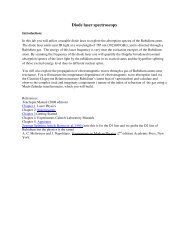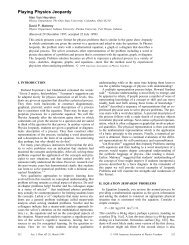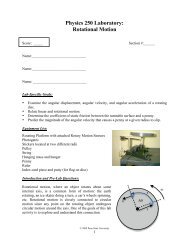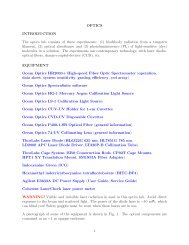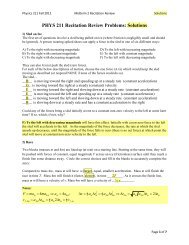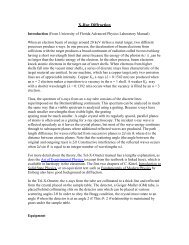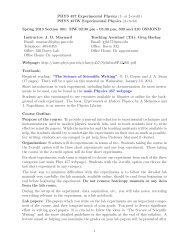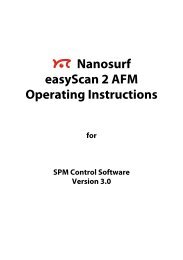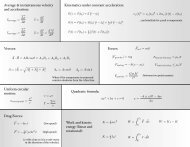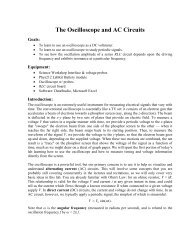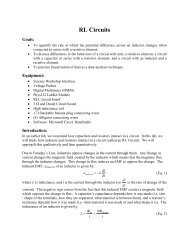Static Electricity (Lab 01)
Static Electricity (Lab 01)
Static Electricity (Lab 01)
You also want an ePaper? Increase the reach of your titles
YUMPU automatically turns print PDFs into web optimized ePapers that Google loves.
T cos θ<br />
T <br />
T sin θ<br />
θ<br />
θ<br />
L<br />
F e<br />
x 1<br />
r<br />
x 2<br />
mg<br />
<br />
Figure 2 Schematic of Coulomb’s Law apparatus and associated free-body diagram for hanging mass.<br />
Finally, for the small angles which we will be dealing with in this experiment, we can use the<br />
small-angle approximation tan θ ≈ sin θ. From Figure 2, we can see that sin x<br />
2<br />
/ L . Thus,<br />
solving for the electric force F e , we find<br />
mg<br />
F e<br />
x 2<br />
. (Eq. 2)<br />
L<br />
If we could accurately measure the mass of the suspended ball, and the length of the string<br />
supporting it (and knowing the acceleration due to gravity at the surface of the earth, g), we<br />
could determine the electrostatic force F e by measuring the horizontal displacement of the<br />
suspended ball, x 2 . For our purposes, it will be sufficient to simply note that the electrostatic<br />
force is directly proportional to this horizontal displacement. According to Coulomb’s Law<br />
(Eq. 1) and the relationship we derived in Eq. 2, we can see:<br />
1<br />
F e<br />
or<br />
2<br />
r<br />
. (Eq. 3)<br />
1<br />
x2<br />
<br />
2<br />
( x2<br />
x1<br />
)<br />
The verification of this relationship will be our goal in Activity 2 of this lab.



